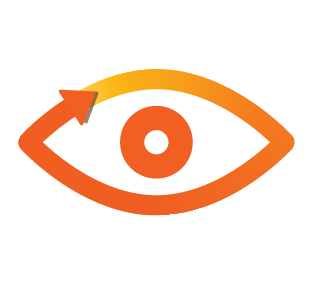I’ve been doing a lot of research recently into mental resilience, reading about the increasing burnout, stress and loneliness we’re experiencing; the sense of being overwhelmed and difficulty in separating our work life from home life.
Much of this, of course, has been exacerbated by the COVID-19 pandemic and the fact that many of us are now working from home. Interestingly, ‘head of remote’ is set to be a trending job title in the coming months, no doubt partly in recognition of this and an indication that organisations are focusing on the transition to remote working. This blog will help you spot the signs of burnout, and importantly, provide practical tips on how to identify and manage stress and loneliness.
Mental resilience is the process of adapting well in the face of trauma, threats or stress. Mental resilience differs from mental health and some mental resilience thinking can be linked back to ancient stoic philosophy. Alain de Botton, the founder of The School of Life, explains that stoicism: “had one overwhelming and highly practical ambition: to teach people how to be calm and brave in the face of overwhelming anxiety and pain.” Sales of books by Stoic philosophers increased during the lockdown and it’s fascinating to see that works by Marcus Aurelius and Seneca on stoicism are still relevant today.
From the second century AD to 2020, humans have suffered loneliness and the pandemic has exacerbated this. We’re also eight months into a situation that’s created sustained levels of underlying stress that our bodies aren’t used to or designed to cope with. It’s a dangerous combination that can lead to burnout.
Mental resilience connects to our ability to face challenges and stress positively. We all have individual levels of mental resilience, but when it’s low, it can lead to burnout.
What do we mean by burnout?
A key element of building your mental resilience is finding ways to manage your stress cycle to reduce burnout, which is generally defined by three components (Freudenberger, 1975):
- Emotional exhaustion: from carrying too much for too long – when we are stuck in an emotion rather than moving through it. This is most strongly linked to negative impacts on health, relationships and work.
- Decreased sense of accomplishment: a sense of futility or that nothing makes a difference.
- Depersonalisation: depletion of empathy, care and compassion.
In a recent Brené Brown podcast, Brené discusses burnout with Emily and Amelia Nagoski, co-authors of Burnout – Solve Your Stress Cycle. They identify some incredible insights and advice and I loved the specific advice about the seven best ways to end the stress cycle:
- Physical activity: this, they say, is the “first line of attack” and can be anything from walking, dancing, weightlifting or yoga.
- Breathing exercises: take big, slow deep breaths – try breathing in for four, holding for four and breathing out for six – over 90 seconds. This engages your parasympathetic nervous system by regulating the central nervous system.
- Positive social interaction: building a connection with people gives a homely feeling of safety.
- Laughter: not polite laughter, but the kind of snorting, proper belly laughter! The argument for injecting some humour into our stress is summarised brilliantly (and humorously) in this TED talk by Loretta LaRoche.
- Affection: a 20-second hug can change your hormones, lower your blood pressure and improve your mood.
- Have a big cry: learn to set what’s upsetting you aside and focus on the physical sensation of crying, without feeding why you’re crying in the first place – see it through to its conclusion.
- Creative expression: arts and crafts, sketching, DIY or knitting – the act of making something allows you to channel feelings into something positive and tangible. It allows your imagination time to be free.
I manage my stress cycle with physical activity three or four times a week. Laughter, hugs and breathing with yoga are also hugely helpful for me. Being amongst nature and stepping outside our four walls is going to be even more important in the coming months; becoming more aware of the changing seasons is a real tonic (check out Rewild Yourself by Simon Barnes for some inspiration on this). When I asked my LinkedIn community how they handle their stress cycle there were some interesting responses, including cold water swimming, walking, bird spotting, baking, doodling with the kids, music, deadlifting, comedy podcasts, good nourishing food, laughter, meditation and even Lego!
We’re not alone in feeling lonely
Now that any initial novelty about working from home has long worn off, we must be mindful of ourselves and others.
Loneliness can be a major form of stress and impacts productivity and efficiency. A study published in the Harvard Business Review found workers are less satisfied with their jobs, receive fewer promotions, switched jobs more frequently and are more likely to quit their current job within the next six months. The study also stressed that managers need to be aware that some people are more prone to loneliness than others, such as single and childless people, those with fewer people in their private life and those who identify as anything other than heterosexual.
I can’t help thinking that tackling loneliness and finding innovative ways to connect remotely, will be a central part of those new ‘head of remote’ roles. We need to become better at spotting the (subtle) signs both in ourselves, and in a colleague or employee, such as social withdrawal, reduced productivity, poor work quality, lower levels of energy and negative thinking.
What can we do to combat loneliness?
- Create opportunities for meaning
- Find times to check-in
- Foster colleague connections
- Seek out or offer support.
Are you quick to pick yourself up after a setback? Or do you struggle to deal with challenges?
A major part of managing burnout and loneliness is building our mental resilience and reframing how we think about our situation. There are many strategies that can help you. Find out more about our workshops that can be tailored to help build mental resilience within your team. Click to listen to Jenni’s podcast episode on mental resilience.
Photo by Tara Robinson on Unsplash






